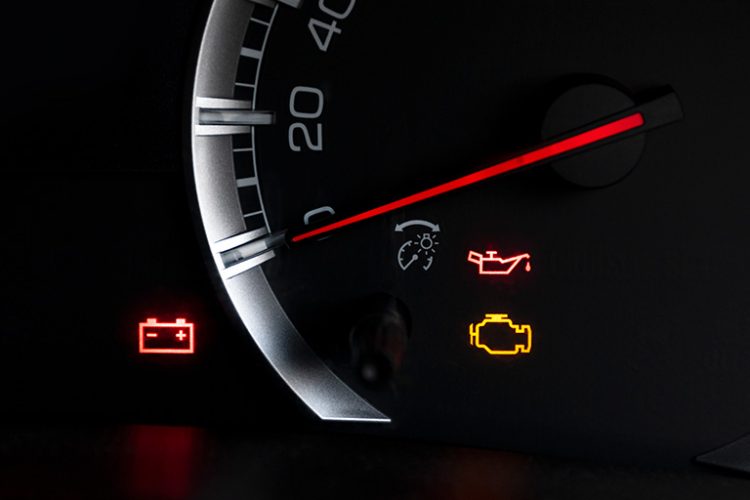With SUVs dominating the American landscape and vehicles becoming more complex, dashboard warning lights have become an increasingly common sight for many drivers. These lights serve as crucial indicators of potential issues within the vehicle that shouldn’t be ignored. Understanding what these lights mean and how to respond to them promptly can prevent costly repairs, ensure safety, and maintain the overall health of your vehicle. Let’s examine into the world of dashboard warning lights and unravel the mystery behind them to help you navigate any future illuminations with confidence.
Deciphering Dashboard Icons
Colour Coding and Urgency
The dashboard warning lights in your vehicle come in a variety of colours, each indicating a different level of urgency. Red lights typically signify a serious issue that requires immediate attention, such as low oil pressure or overheating. Yellow or orange lights indicate a potential problem that should be addressed soon, like a faulty engine light or low fuel. Green or blue lights are generally for informational purposes and may indicate that a particular system is active, such as high beams or cruise control.
Common Symbols and Their Meanings
Common symbols you may encounter on your dashboard include a battery light, which could indicate a charging issue; a temperature gauge, signalling overheating; or a check engine light, alerting you to a problem with your vehicle’s engine. Understanding these symbols can help you address potential issues before they escalate, ensuring the safety and longevity of your vehicle.
Meanings: It is crucial to familiarize yourself with the symbols on your dashboard to know when action is required. Ignoring these warning lights could lead to costly repairs or dangerous situations on the road. Regularly checking your vehicle’s manual can help you decode the mystery of these dashboard icons and keep your vehicle running smoothly.
Responding to Warning Lights
Immediate Actions to Take
To effectively respond to dashboard warning lights, immediate action is imperative. When a warning light illuminates on your dashboard, the first step is to pull over to a safe location and assess the situation. Check your vehicle’s owner’s manual to identify the meaning of the specific warning light. In some cases, the issue may be minor, but it’s critical to address it promptly to prevent further damage.
When to Seek Professional Help
To determine when it’s time to seek professional help for dashboard warning lights, consider the severity of the issue and your comfort level with vehicle troubleshooting. If the warning light indicates a serious problem, such as engine or brake issues, it’s advisable to seek immediate assistance from a qualified mechanic. Ignoring such warnings can lead to costly repairs or even dangerous situations on the road.
This is particularly important for warning lights that indicate potential safety hazards or mechanical failures. Ignoring these warnings can put you and other road users at risk. It’s better to err on the side of caution and have a professional diagnose and address the issue promptly.
Maintenance Tips to Prevent Warning Light Activation
Keep regular vehicle checkups a priority to ensure smooth performance and avoid unexpected warning light activations. Scheduled inspections by a qualified mechanic can help identify and address potential issues before they escalate, saving you time and money in the long run. Knowing your vehicle’s condition can give you peace of mind and keep you safe on the road.
Regular Vehicle Checkups
Maintenance of your vehicle through regular checkups is crucial in preventing warning lights from turning on. By examining your vehicle’s key components on a consistent basis, you can catch any potential problems early on and avoid more serious issues down the road. Stay on top of your vehicle’s maintenance schedule to ensure optimal performance and minimize the risk of warning light activation.
Key Components to Monitor
Vehicle maintenance involves paying close attention to key components such as the engine, brakes, tires, and fluids. It is crucial to regularly check these components to ensure they are functioning properly and within safe limits. Ignoring routine maintenance can lead to costly repairs and unexpected warning light appearances, compromising your safety and the longevity of your vehicle.
Troubleshooting False Alarms
Identifying and Solving Common Sensor Issues
Now, when faced with dashboard warning lights falsely illuminating, the root cause often lies with sensor malfunctions. Issues like a faulty oxygen sensor, a malfunctioning mass airflow sensor, or a problematic throttle position sensor can trigger warning lights. Identifying and resolving these sensor problems through professional diagnostics and potentially sensor replacements can eliminate false alarms.
When to Reset Your Vehicle’s Diagnostic System
For common instances of false dashboard warning light triggers, resetting your vehicle’s diagnostic system can be a reliable solution. This process clears stored error codes and resets the system, giving your vehicle a fresh start. It is advisable to reset the system after addressing and fixing any underlying issues that may have caused the false alarms.
Commonly misunderstood, resetting the diagnostic system is not a cure-all for underlying problems. It is crucial to address the root cause of the false alarms before performing a reset. Ignoring the underlying issues can lead to a recurrence of warning lights and potentially more severe mechanical problems down the line.
Sensor malfunctions are often the culprits behind false dashboard warning lights. These sensors play a critical role in monitoring various systems within your vehicle. Ignoring sensor issues can lead to performance issues, decreased fuel efficiency, or even engine damage. Regular maintenance and prompt attention to sensor problems can prevent false alarms and ensure the proper functioning of your vehicle.
Conclusion
Hence, knowing how to identify and respond to dashboard warning lights is crucial for maintaining the health and safety of your vehicle. By understanding the common signs these lights indicate and taking prompt action when they illuminate, you can prevent potential issues from escalating into costly repairs or breakdowns. Regularly checking your vehicle’s manual and consulting with a qualified mechanic can help you stay informed and proactive in addressing any warning light that appears on your dashboard.
FAQ
Q: What should I do if a dashboard warning light illuminates?
A: When a dashboard warning light comes on, it is important not to ignore it. The first step is to consult your vehicle’s owner’s manual to identify the meaning of the particular warning light. It could indicate issues such as low tire pressure, engine problems, or low battery. Once you have identified the problem, it is advisable to address it as soon as possible to prevent any potential damage or safety hazards.
Q: Are all the dashboard warning lights serious?
A: While some dashboard warning lights require immediate attention, others may not be as urgent. It is necessary to differentiate between the severity of warning lights. For example, a red warning light typically indicates a serious problem that requires immediate action, while a yellow or orange light may signify a less critical issue that can be addressed at a more convenient time. However, it is always recommended to have any warning lights checked by a professional to ensure the safety and functionality of your vehicle.
Q: Can I continue driving with a dashboard warning light on?
A: In general, it is not advisable to continue driving when a dashboard warning light is illuminated, especially if it is a red light indicating a severe problem. Ignoring warning lights can lead to further damage to your vehicle or even pose a safety risk. If you are unsure about the seriousness of the warning light, it is best to pull over in a safe location, turn off the engine, and seek assistance from a qualified mechanic. Be mindful of, it is always better to be safe than sorry when it comes to dashboard warning lights.



